
Literary Leiden - the reading list
Leiden fulfills a special role in Dutch literature: as a setting for stories as well as a place of work and residence for leading authors. It is the city described by Willem Bilderdijk as "O Leiden, Flower of Cities," but depicted far less glamorously by F. Bordewijk. The same city where Boudewijn Büch lived in a commune and where Jan Wolkers was in hiding. For this reading list, we made a selection of iconic titles from Leiden's literary history.
April is Literary Leiden month at UBL! This reading list is just the beginning. Read a book quietly in our new reading corner, listen to special Leiden stories over lunch, participate in the guided tour past Leiden literary locations, or watch the Leiden literary film of your choice. Check out the link on the right for more information about Literary Leiden activities.
All iconic Leiden books in the list below can be borrowed from the UBL. Request them by following the link under the title, or by searching the catalog yourself by title, author or keyword.
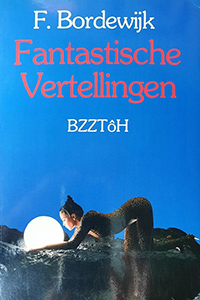
F. Bordewijk, Fantastische vertellingen
1919
The three works with which writer Ferdinand Bordewijk (1884-1965) won a place in Dutch literary history are Blokken (1931), Knorrende beesten (1933), and Bint (1934). But even before he wrote these works, he published three collections of Fantastsiche vertellingen (Fantastic Tales): the first was published in 1919, the second in 1923, and the third in 1924. Several of these are set in the Leiden fraternal student milieu of the early 1900s. Twee proeven genomen op Jos van der Haerden (The Two Trials of Jos van der Haerden) is the bizarre story of a student who looks like an ape, and flees out the window like a gorilla when the narrator and his friends Korenaar, Bielstra and Wellingman try to overpower him. It is not a literary masterpiece, but the evocation of Leiden's slums is certainly successful
"Leiden is not large, but it has the poverty of a metropolis. Everywhere, even in the more affluent parts, poverty seaps through the cracks. Walk along the Plantsoen past the villa-like houses, for example, and look between the houses: they are all alleys and slums, teeming with soiled children. And so it is everywhere. Don't forget the mass of defective, hunchbacked, horn-rimmed, legless people. And especially the hideous skin diseases, attracted by the teaching hospital."
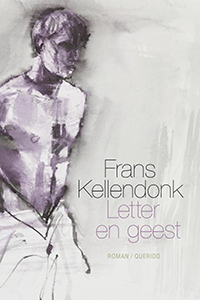
Frans Kellendonk, Letter en geest: een spookverhaal
1982
In 1982, Frans Kellendonk published Letter en geest, his third novel after Bouwval (1977) and De nietsnut (1979). The novel tells the story of thirty-something Felix Mandaat. He decides to apply to a university library for the position of Germanic language subject librarian. For him, this application also represents an attempt to break away from his solitary existence: becoming an employee of a library is also, for him, about joining a community. Mandaat is hired as Mr. Brugman's temporary replacement. Since he has little to do, he has plenty of room to observe his colleagues and wander around the building. As he walks in the library's warehouses, he believes he hears mysterious noises: Mandaat discovers that there is a ghost haunting the library, although the novel also suggests that it has sprung from Mandaat's own imagination. After three months, he resigns: ultimately, being part of a community proves too much to bear. Although the novel can be read as a ghost story, it is indeed rooted in reality: Frans Kellendonk himself worked between January 1 and April 30, 1979, as a subject librarian of English at the Leiden University Library. In 1990, a few years after publication of his magnum opus Mystiek lichaam (Mystical Body), Kellendonk died of AIDS.
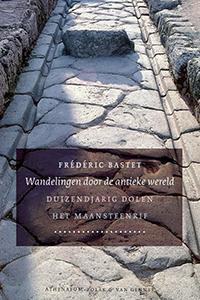
F.L. Bastet, Wandelingen door de antieke wereld
1978-1987
Frédéric Bastet (1926-2008) is best known as an award-winning essayist (P.C. Hooft Prize 2005) and biographer of Louis Couperus. But much of his working life was spent in Leiden's academic world. After studying Classical Languages and Archaeology, he made a name for himself in the latter field and was appointed professor (1966-1976) at the age of 40. After his professorship, he worked as curator of the Classics Department of the National Museum of Antiquities until his retirement.
He conveyed his erudite knowledge of antiquity in a very accessible and passionate way in the five-part series Wandelingen door de antieke wereld (Walks through the Ancient World), in which he takes the reader to ancient cities and landmarks. No dry archaeology or history, but stories about well-known and lesser-known works of art, about adventurers and grave robbers, historical characters and the role of classical heritage. From Pompeii to Nemrud Dag in eastern Turkey, Bastet knows how to reveal fascinating details and interpretations, often with a twinkle in his eye, but with an enthusiasm and expertise that brings the ancient world unmistakably to life. He is the tour guide who takes you from the easy chair to places where - while reading - you would love to be.
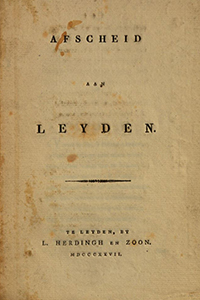
Willem Bilderdijk, Afscheid aan Leyden
1827
Throughout his life, the poet, lawyer and versatile scholar Willem Bilderdijk (1756-1831) had a special bond with Leiden, the city he called the "flower of cities" and the "Eden of the world." As early as 1776 he was awarded a gold medal of honor by the Kunst wordt door arbeid verkreegen (art achieved through labor), and between 1780 and 1782 Bilderdijk studied law at Leiden University. After refusing, as an ardent Orangist, to recognize the Batavian regime, he was exiled from the Netherlands in 1795. For more than a decade he lived in difficult conditions in England and Germany. When he was able to return to the Netherlands in 1806, he immediately traveled to Leiden. Here he witnessed the devastating gunpowder disaster of Jan. 12, 1807, forcing him to move to The Hague. In 1817, he settled again in Leiden, this time as a private teacher. Ten years later, when he was again forced to move to Haarlem and leave the City of Keys for good, he wrote a moving poem, Afscheid aan Leiden (Farewell to Leyden) (1827), a farewell from a man with a "heart shattered by 'woe.' In the last stanza, he addressed the city, which had seen him grow old, but had also beheld his "life's first flower.

K. van het Reve, Afscheid van Leiden
1984
Karel van het Reve (1921-1999) was professor of Slavic Literature from 1957 to 1983. Upon his farewell to Leiden, he wrote an article appropriately titled Afscheid van Leiden (Farewell to Leiden), which appeared in the volume Afscheid van Leiden. In this article, Van het Reve writes about the city and the Leiden Academy in his familiar ironic way. "Nowhere does the transition from life to death take place so imperceptibly as in Leiden," Tatjana Ehrenfest said to Albert Einstein, which, rumour has it, made the latter decide to continue his scientific career in America. The highlight of the article is the story in which Van het Reve drove his car into the Rapenburg on black ice, was rescued by a construction worker ("Get out, asshole!") and was still able to lecture because writer Maarten Biesheuvel lent him his pants. We do need to warn against the unsubstantiated slander against the University Libraries: our collection does contain the Marx-Engels Gesamtausgabe and also the collected works of Lenin - though it is true that the latter series contains some grim gaps.
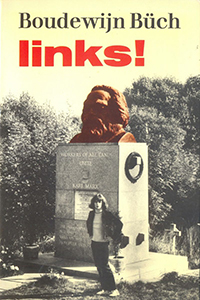
Boudewijn Büch, Links! Een rode burleske
1986
Leiden had a leftist commune in the 1970s: De Bange Duivel. This commune gained some national fame because writer Boudewijn Büch (1948-2002) lived in this commune for a short period. The novel Links! Een rode burleske (Left! A Red Burlesque) is set in Leiden and is about this period.
Büch lived in Leiden first in rooms on the Haarlemmerstraat and then on De Sitterlaan. In 1971, he began living in the commune on Koningstraat with four adults and two children. Ger van den Berg (1937-2004), an expert in Eastern European law and Russian studies at Leiden University, gave privatissima in dialectical materialism there. The members, including graphic artists Frans Montens and Lydia Mercedes Luijten, collaborated on a variety of literary and art projects, the most famous of which became Een hol kinderhoofd de leegte (A Hollow Child's Head the Void) (1973), a box containing several photographs, etchings and a story. Although in the summer of 1972 Büch would "shed his Maoist insignia worn with verve" and leave the commune, he still figures in this project. Included in the box is a photographic portrait and he is depicted on one of the etchings. Furthermore, he appears in the accompanying text under the pseudonym "The Speech Teacher." With the novel Links! he dealt with this episode in his life and the other members of the commune.
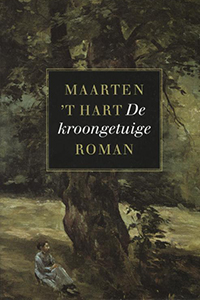
Maarten ‘t Hart, De Kroongetuige
1983
De Kroongetuige is one of the most successful literary crime novels set in Leiden. When a young woman suddenly disappears, both the police and the media point to an employee of the biological laboratory. He allegedly killed the woman, only to feed her to the lab's rats. However, the employee shrouds himself in silence, leaving his wife to investigate to find the true culprit.
What follows is a suspenseful detective story set against 1970s Leiden. The book therefore gives both a city and time picture. For example, café "Spiegels" (De Twee Spieghels) plays a central role in the book, as does the former biological laboratory, which stood near the Observatory. It also occurs when the protagonist visits the Women's House and sees how people there discuss current politics. This passage is all the more interesting because at the same time 't Hart was very critical of radical feminists in De vrouw bestaat niet.
With De Kroongetuige, Maarten 't Hart wrote a bestseller that was a fixture on the reading lists of high school students for years. The book lent itself perfectly to this, because of its limited size, the exciting story and the stylistic changes that occur throughout the book. For this reason, the book was also mistakenly considered juvenile literature for a long time. In reality, this is a gripping literary thriller that is of particular interest to the people of Leiden.
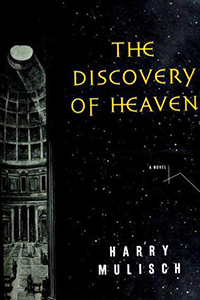
Harry Mulisch, The Discovery of Heaven
1992
Although he was born in Haarlem and was primarily active as a writer in Amsterdam, Harry Mulisch chose to situate a number of central scenes of The Discovery of Heaven in Leiden. Main characters Max Delius and Onno Quist meet their friend Ada Brons in Leiden, and together Max and Ada visit the Leiden Observatory, where revolutionary research is being conducted. In the end, it takes a conspiracy of angels to prevent this research from reaching its logical endpoint.
The Discovery of Heaven was Mulisch's magnum opus and has been named several times as one of the best works of Dutch literature. When humans become self-aware through knowledge and detach themselves from God, the latter responds with a complex plan to reclaim the covenant between humans and God - anchored in the Ten Commandments. This premise offers Mulisch the opportunity to write an alternative history of the twentieth century and to reflect on the relationship between knowledge and faith, and between mysticism and science.
Mulisch's main work has therefore frequently been described as a philosophical or mystical novel. However, that leaves out certain aspects of the novel, for the work is also powerful because of its fast pace, numerous events and expressive characters. There is also the requisite humor, when Mulisch makes fun of the rebellious 1960s - and, to some extent, his own role in it.
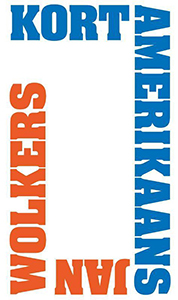
Jan Wolkers, Kort Amerikaans
1962
In 1962, Jan Wolkers made his debut as a novelist with Kort Amerikaans (Short American). The story is set in Leiden during the last years of World War II. 18-year-old Eric van Poelgeest, along with his friend Peter, are on their way to the Ars Aemula Naturae drawing and painting academy to enroll in classes. Peter is arrested in a raid; Eric escapes. At the academy, Eric meets the painter in charge and candidly tells him that he is in an attic room hiding from the labor service. In that room, Eric struggles with his burgeoning sexuality. He has a girlfriend who does not want sexual contact for the time being, but at the lamp workshop where Eric works, a Jewish girl in hiding is more benevolent in that regard. Throughout the novel, the threat of war hangs over events like a cloud. The book is at times explicitly sexual, and clearly people were not used to that in 1962. In a 1979 interview, Wolkers said of his contact with his publisher Meulenhoff: "In the manuscript of Kort Amerikaans, Bloemena [Willem Bloemena, editor at Meulenhoff, ed.] had put dashes next to all the cunts and cocks. Those were supposed to be vaginas and penises. I thought those were such damn dirty words that I said: fine, then it won't go through. Not a word will be changed. Then he accepted the whole manuscript."
